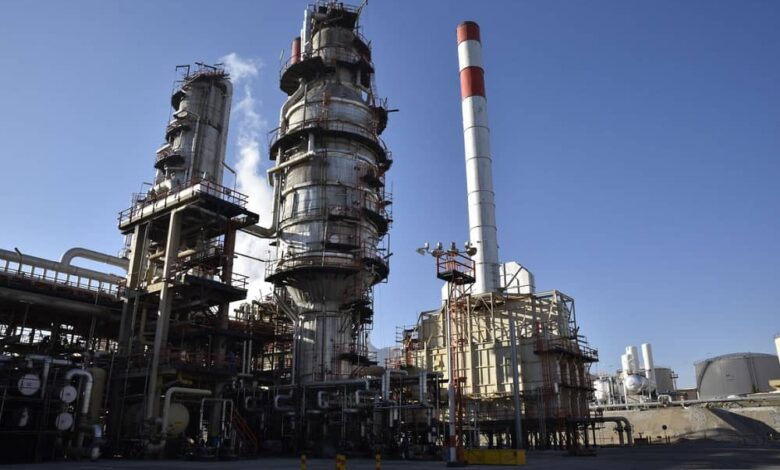Iran’s Oil Sales: Separating Fact from Regime Rhetoric

iran oil refinery petroleum
Written by
Mansoureh Galestan
As part of the Iranian regime’s propaganda, state officials and media outlets closely associated with the ruling faction persistently claim that Tehran has successfully regained access to the global oil and gas market, reminiscent of the pre-sanctions era. Exploiting the Western policy of appeasement, the Kayhan newspaper, whose editorial guidelines are guided by the Supreme Leader’s office, has even gone so far as to boast that the Ebrahim Raisi government’s major achievement is the revival of oil revenues.
However, despite the tacit consent from Western powers that has allowed the regime to auction Iran’s oil, these claims tend to be exaggerated, aimed at maintaining the morale of the regime’s forces as it grapples with a multitude of challenges.
Iran still faces sanctions imposed by the United States on oil sales and related products, which prohibit nations who want to do business with the US from purchasing Iranian oil. Nevertheless, over the past year, the Biden administration has effectively facilitated substantial Iranian oil sales—albeit under controlled conditions— as part of a diplomatic approach toward Tehran and in response to the decline in Russia’s global oil market presence following Western sanctions due to its actions in Ukraine.
Western European nations, Japan, India, and South Korea, traditionally Iran’s primary oil buyers, continue to abstain from procuring Iranian oil. Consequently, the regime has been predominantly exporting its oil to China, while also directing a portion toward Syria and Venezuela for political and influence-related objectives. China, a major global oil consumer, has played a crucial role in stabilizing global oil prices.
Reports from August indicate that Iran’s daily oil exports reached approximately 1.5 million barrels. However, this figure remains significantly lower than the 2.5 million barrels per day of oil exports achieved by Iran in 2018. A substantial portion of Iran’s oil exports to China is sold at a discount of roughly $15 per barrel, exerting pressure on Iran’s national resources. Notably, even Russia, grappling with its own sanctions, provides oil to India and other nations at a discount of less than $10 per barrel.
#Iranian oil exports: from reality to propagandahttps://t.co/B1cUFG625N
— NCRI-FAC (@iran_policy) August 31, 2023
As per reports from Reuters, the cumulative value of discounts provided by Iran to China over the past nine months has exceeded $4.2 billion, nearly three times Iran’s total exports to India. It is worth noting that China does not settle these payments in cash or U.S. dollars; instead, Iran is compelled to accept the Chinese yuan, a conversion that could result in substantial losses.
Statistics and estimates from the regime’s parliamentary research center indicate that, at an exchange rate of 28,500 Iranian tomans per US dollar, approximately $12 billion of oil sales revenue in the year 1402 (according to the Persian calendar) is designated for the purchase of essential goods. The remaining amount, approximately $1.7 billion, is earmarked for other expenses, calculated at an exchange rate of 38,000 tomans per US dollar.
According to the regime’s own regulations, Iran is obligated to allocate 42% of its oil revenues in the 1402 calendar year to the National Development Fund, with an additional 14.5% allocated to the National Oil Company for current expenses and investments in the oil industry. This implies that only 43.5% of oil revenues were originally intended for the government’s budget. Based on budget statistics, the government’s projected income from oil exports this year is approximately 409 trillion tomans, equivalent to $13.7 billion, representing 43.5% of Iran’s total oil revenues designated for the government.
However, actual calculations suggest that the regime’s oil revenue for this year is closer to approximately $13.1 billion. Statements from Davood Manzoor, the head of the regime’s Planning and Budget Organization, indicate that only about $6.5 billion of this amount has been realized. This implies that Iran’s average daily oil exports should be approximately 650,000 barrels, which is substantially less than the 1.5 million barrels claimed by official sources.
Reports on financial performance further indicate that Ebrahim Raisi’s government faced a budget deficit of 258 trillion tomans in the first four months of the 1402 calendar year. To address this deficit, the government reduced expenditures for provinces responsible for delivering essential public services such as education, healthcare, and infrastructure, allocating a mere 7% of the originally planned budget. Additionally, the government withdrew 24 trillion tomans from the foreign exchange reserve fund and 25 trillion tomans from the deposits of state-owned companies held by the treasury.
Watch and judge how the clerical regime is spending #Iran's oil and tax revenues pic.twitter.com/6ejsMtpgPm
— NCRI-FAC (@iran_policy) August 18, 2023
Unfortunately, the revenue generated from the regime’s oil sales has not been allocated to benefit the people of Iran. According to a report from Reuters, the regime increased its payments to Hamas from $100 million to $350 million in the previous year.
Additionally, expenses associated with the regime’s proxy groups in Lebanon, Syria, Iraq, and Yemen, along with concealed costs linked to projects related to nuclear weapons, missile development, and drones, have further strained Iran’s resources.
The significant funds allegedly transferred abroad by the regime’s leaders exacerbate the situation, leading to rising costs of everyday goods and housing. In reality, the Iranian people are grappling with mounting financial burdens. Javad Mansoori, a former ambassador of the regime to China, has astutely observed that “even if gold were to rain from the skies of Iran, the overall economic challenges faced by the population would remain largely unaddressed.”

